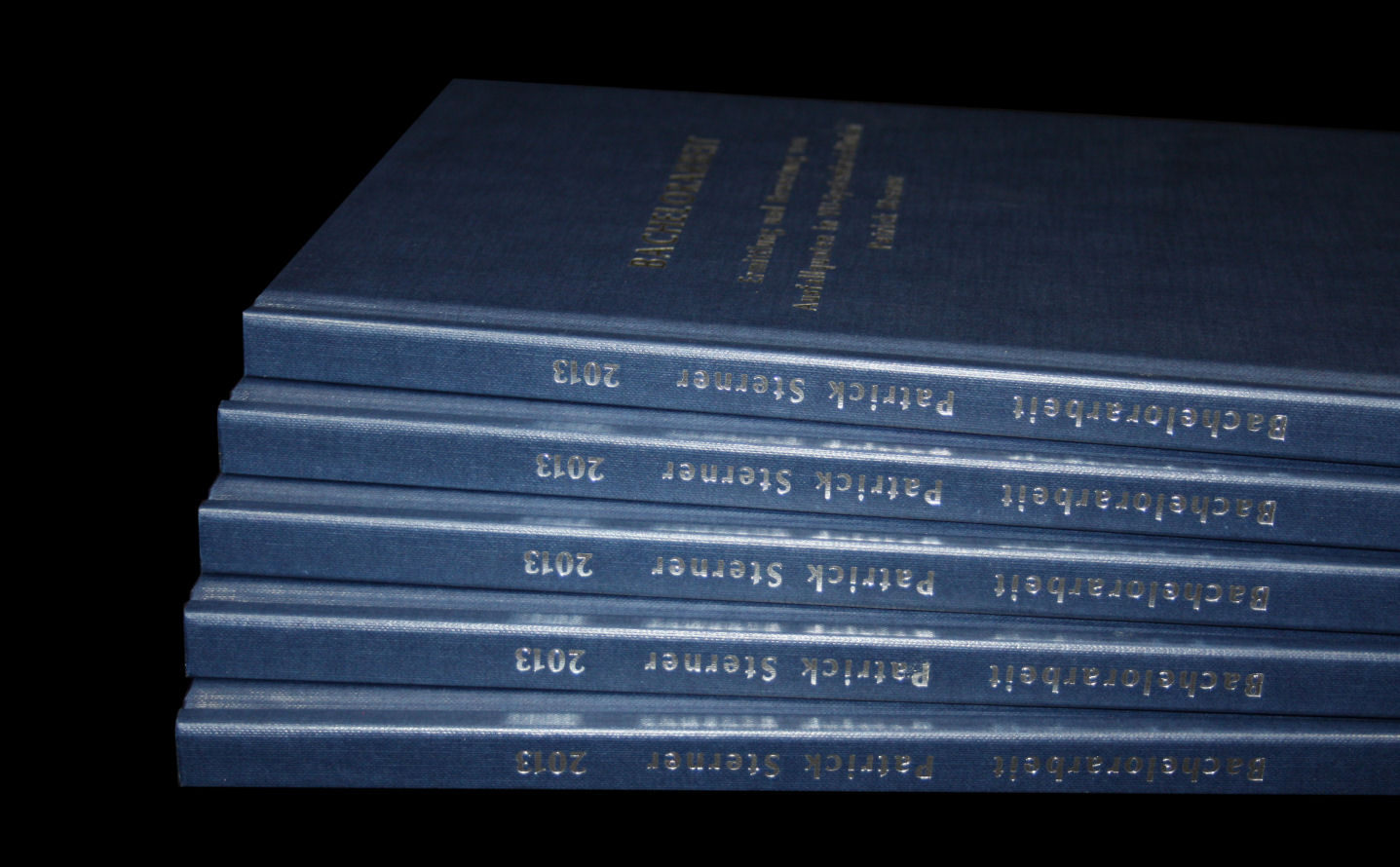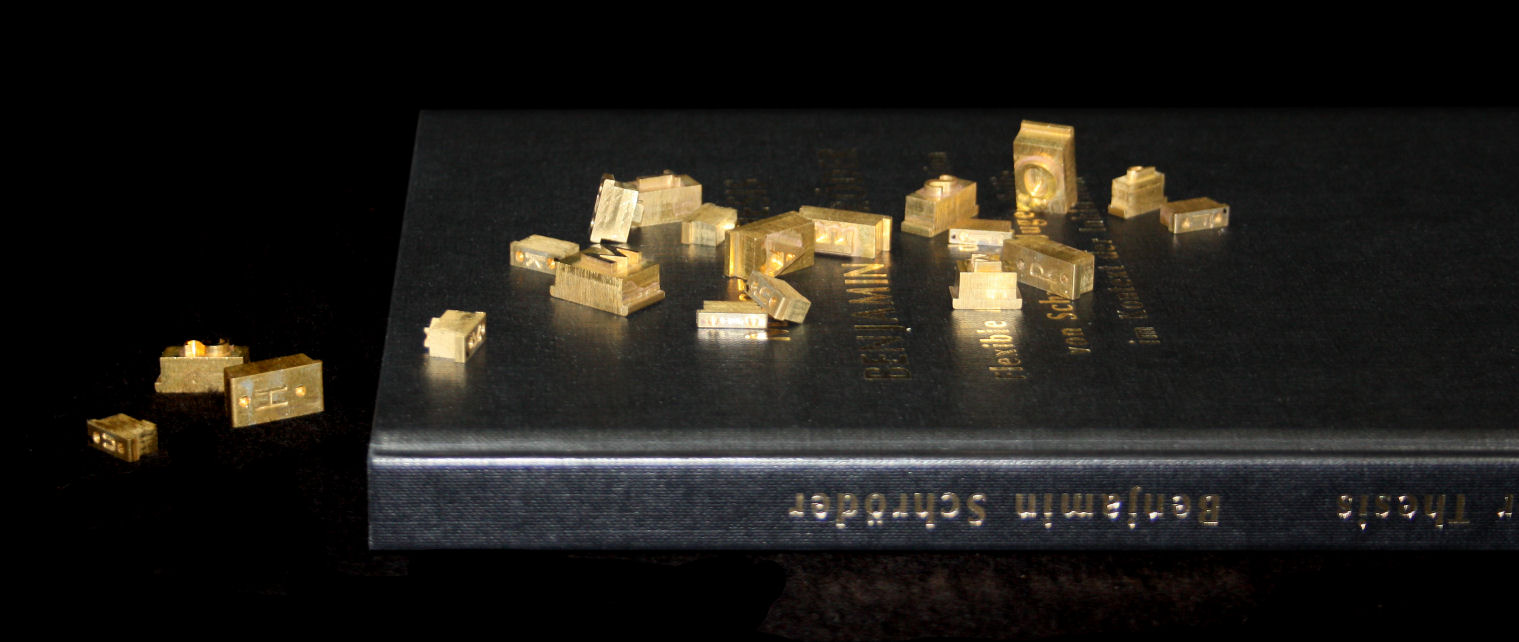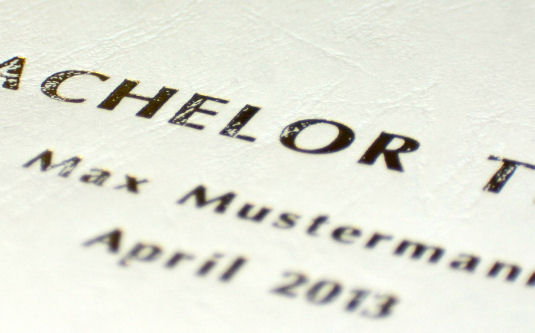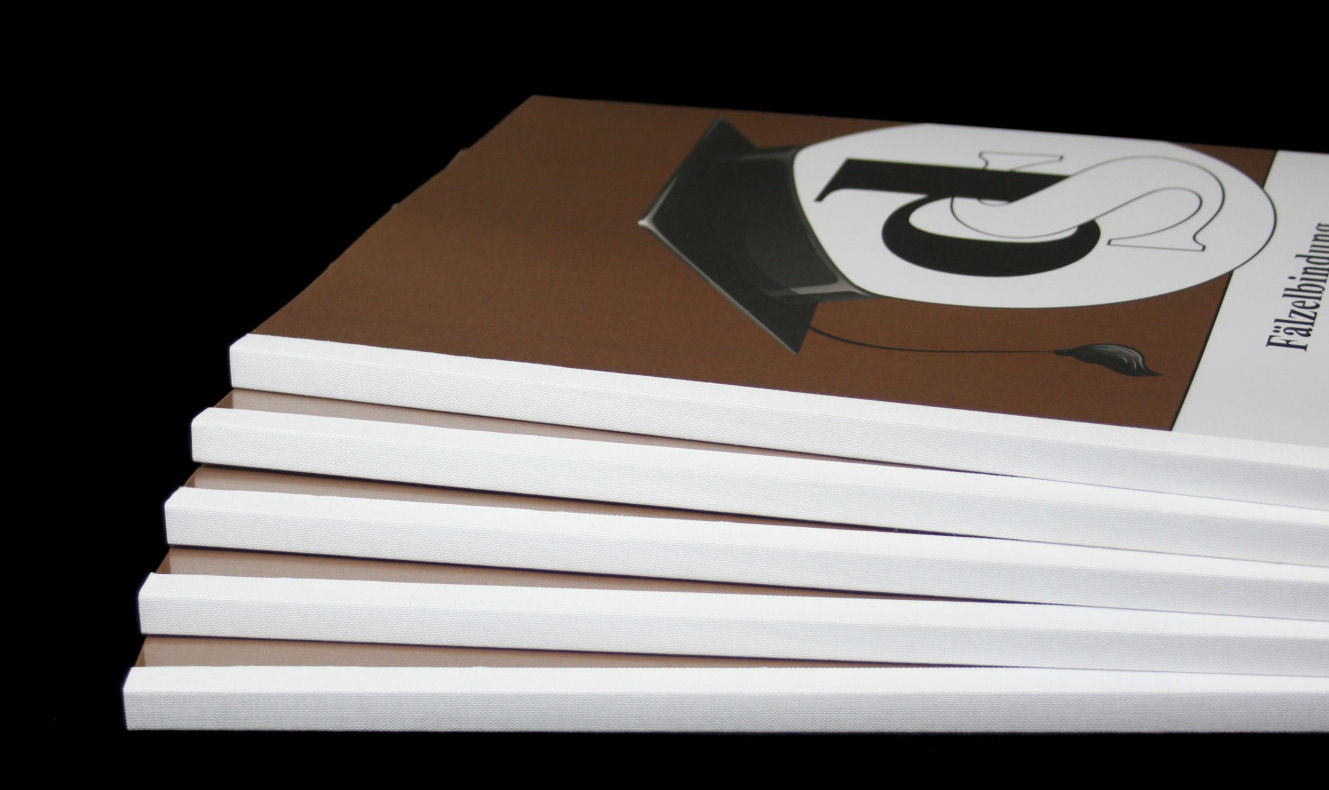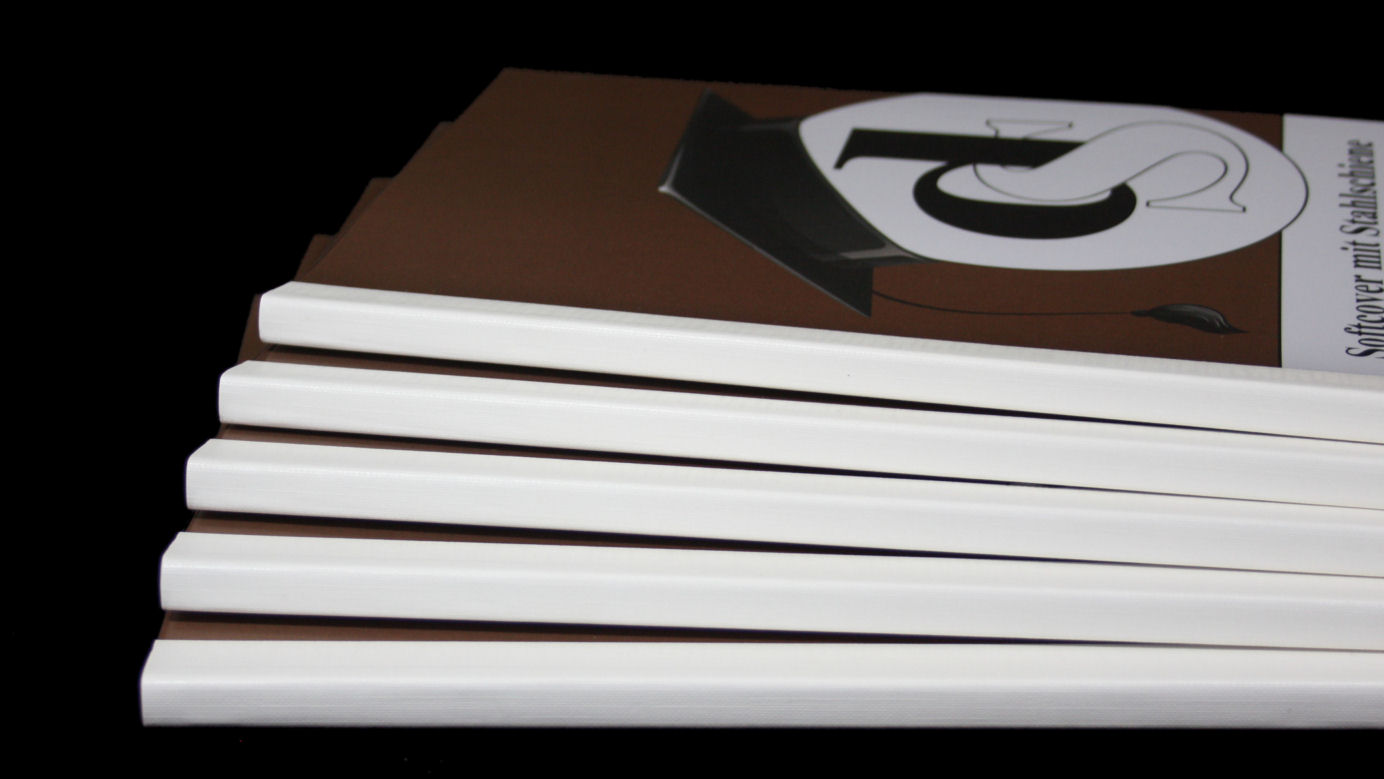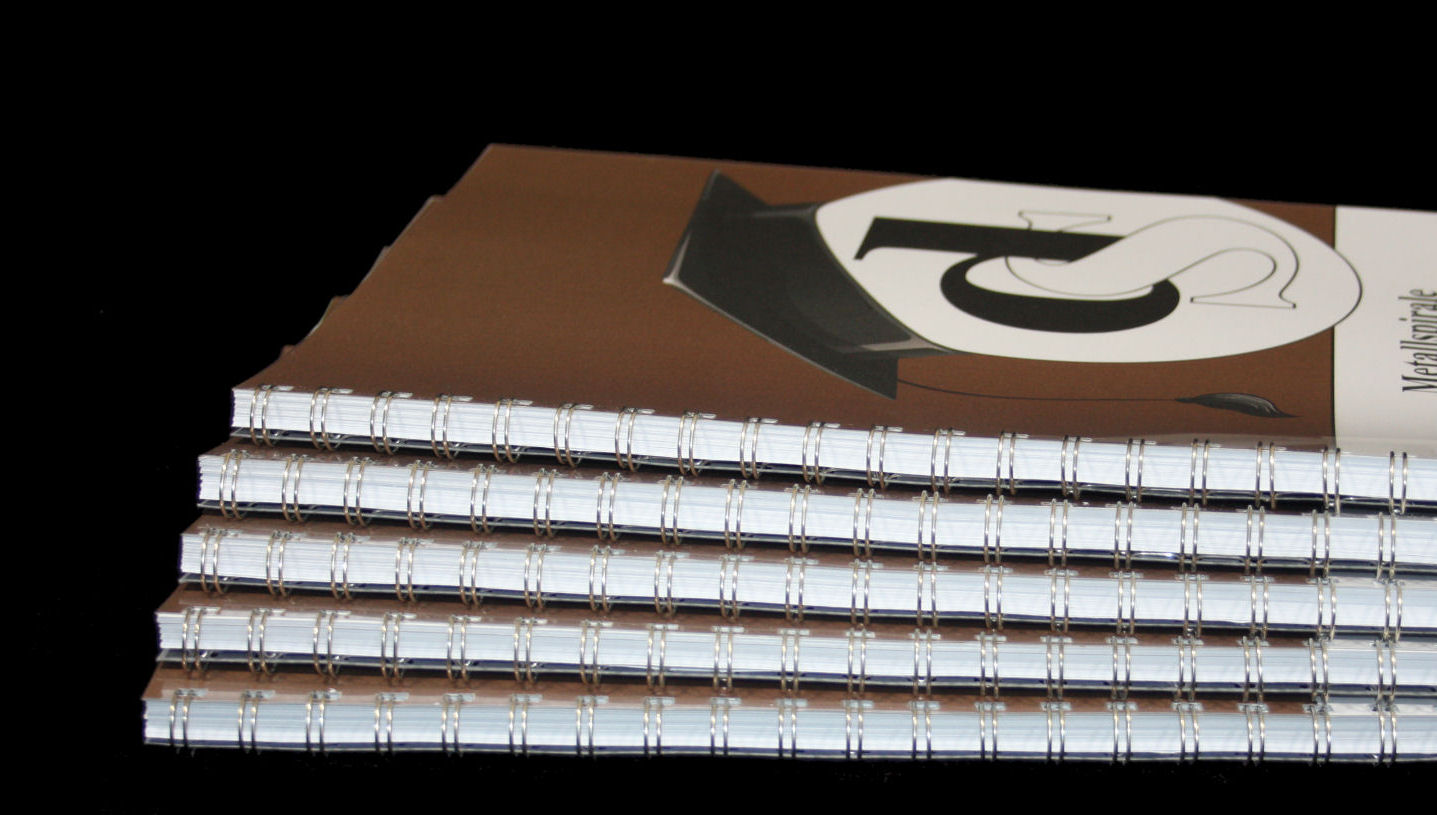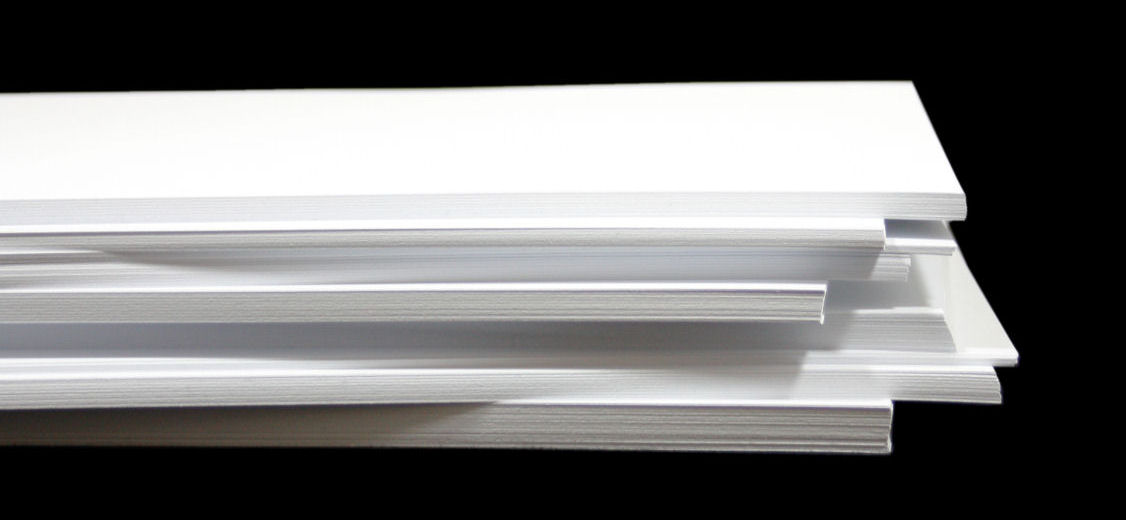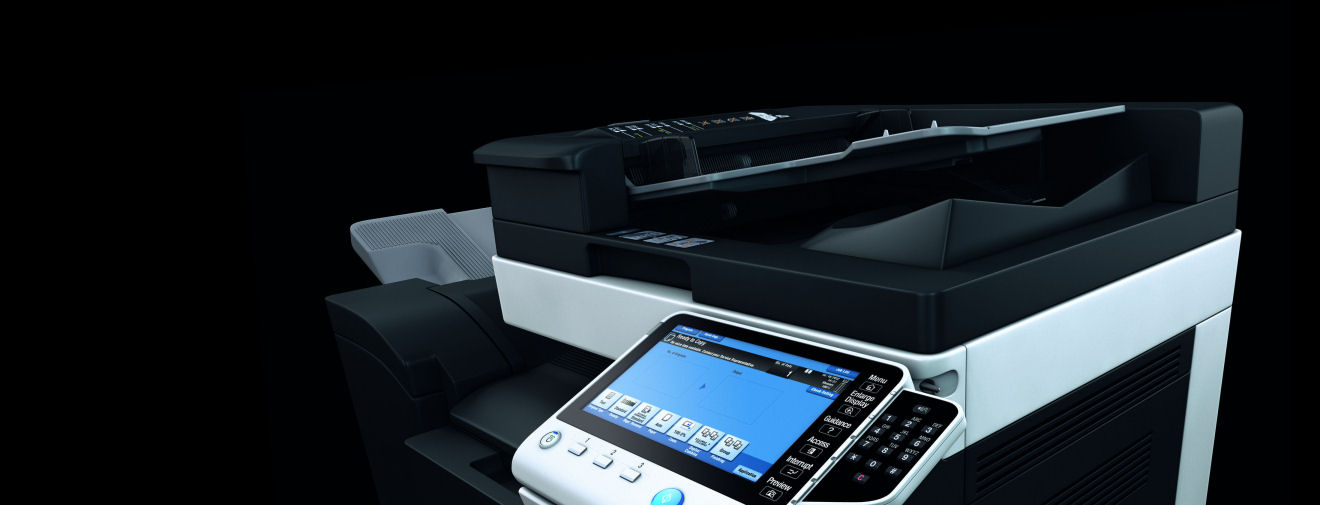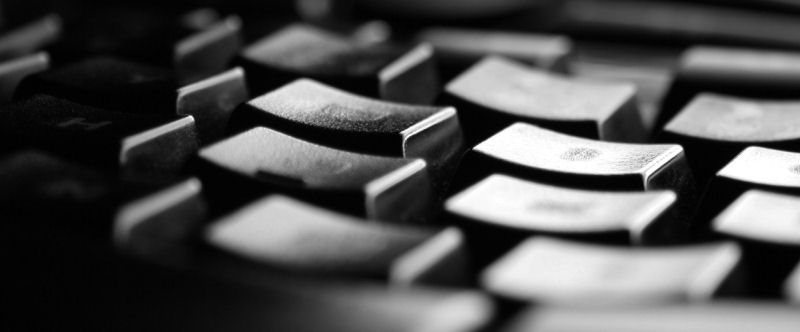Fresh fibre papers
Paper is available with the grammage of 80g, 100g and 120g. All are
FSC 
-certified,
Ecolabel 
-certified, woodfree, chlorine-free, bright white and qualitatively at the forefront of their segment. In addition and in consequence of their high opacity they're hardly translucent already with 80g and thus very suitable for both-sided printing.
Differences basically consist of surface feel and texture:
120g paper has a considerably heavier and therefore higher-grade feel than paper with lower grammage, with the feel of
80g paper due to the rougher texture corresponding to
100g paper. 100g and
120g paper were coated, which means their surface was flattened with fillings in order to achieve an exact print impression and more brilliant colours.
For the purpose of a homogeneous print layout and because of varying degrees of contraction of different paper in intense heat, it is advisable to work with only one type of paper per copy.
80g Paper
The
80g paper Double A 
by Advance Agro is already included in print prices and represents the premium class of office paper. Because of its high volume it feels more like a
100g paper, has a low translucency (6%) and a high degree of whiteness (165 CIE) and is appropriate to b/w prints and copies.
100g Paper
The 100g premium paper Color Copy produced by mondi was developed especially for use in colour laser systems. It is coated and satin-finished on both sides. This additionally flattened surface results in exacter outlines and more colour force. Coated paper is advisable to use for a view as high-class as possible, or if graphics are contained.
120g Paper
Color Copy is also provided in a grammage of 120. In addition to surface characteristics described at 100g paper, 120g paper scores with its maximum grip. It is turned over very easily and leaves a high-quality impression.
Recycled papers
Two types of recycled paper are provided, both with a grammage of 80, both with a degree of whiteness of 80, both with a opacity of 94%, both made of 100% waste paper, both awarded with the environmental label
Blue Angel 
and of couse both FSC- and Ecolabel-certified. One of them is pure white (whiteness: 135 CIE), the other unbleached (whiteness: 80 CIE) and therefore even more eco-friendly but still white.
Recycled papers are already included in the print prices, even the pure white one.
Pure White Recycled Paper
With its white degree of 135 CIE
Image Recycled High White 
by Antalis has the highest degree of whiteness allowed for certification with the Blue Angel. The opacity (light resistance) is 94%, values up from 80% are considered suitable for printing on both sides. The surface is relatively smooth, but not coated.
Unbleached Recycled Paper
A particularly environmentally friendly alternative is our unbleached recycled paper, any kind of bleaching causes awful damage, which can be avoided with a little (yes, really just a little) less whiteness. This has nothing to do with jotter or newsprint, as it is often imagined, it seems just like an average office paper.
Provided is
Trend White ( / No. 2 ) 
by Steinbeis with a whiteness degree of 80 CIE and an opacity of 94%.
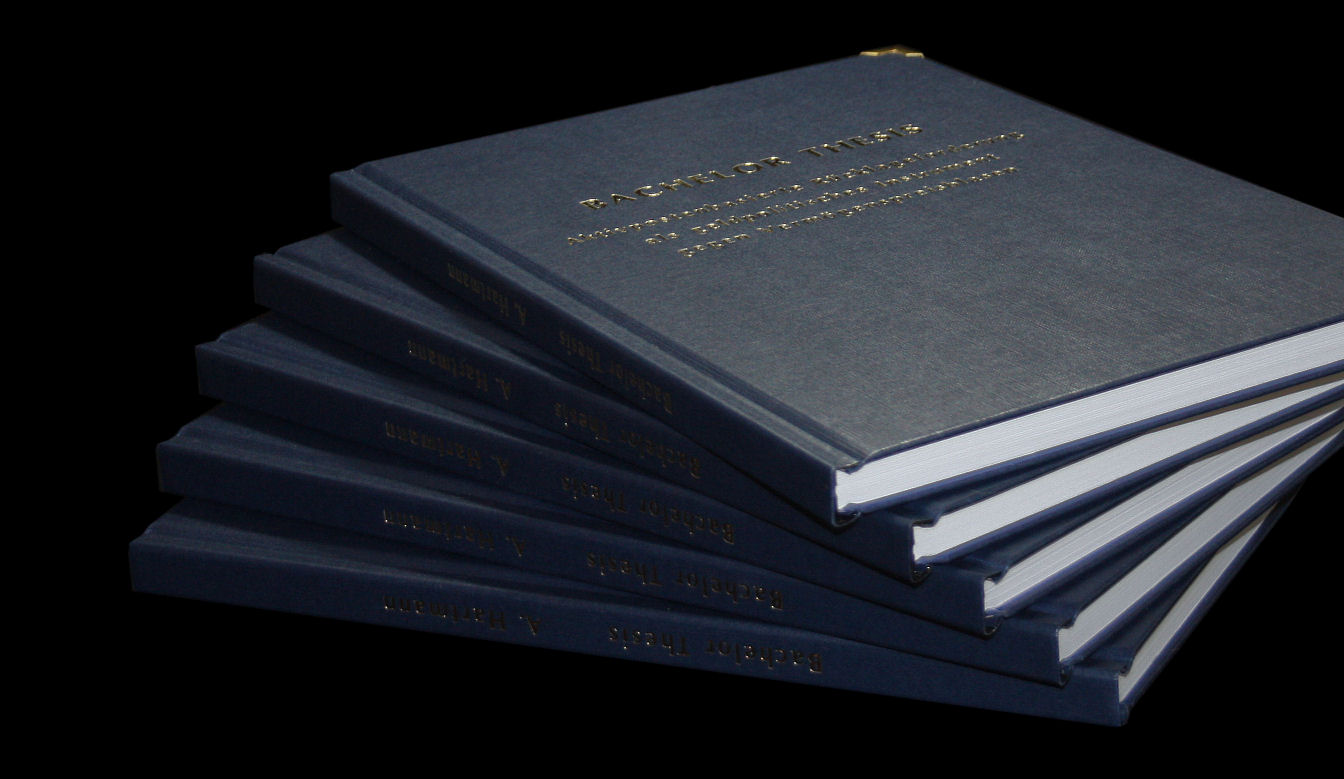


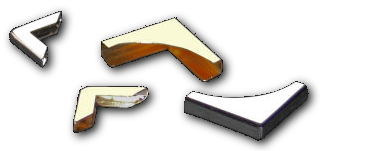 Books can additionally be graded up and protected by adorned corners, silver or gold coloured, styled as angle with an edge length of 1.6 cms or as quadrant with an edge length of 2.1 cms and a slightly concaved circular surface.
Books can additionally be graded up and protected by adorned corners, silver or gold coloured, styled as angle with an edge length of 1.6 cms or as quadrant with an edge length of 2.1 cms and a slightly concaved circular surface.